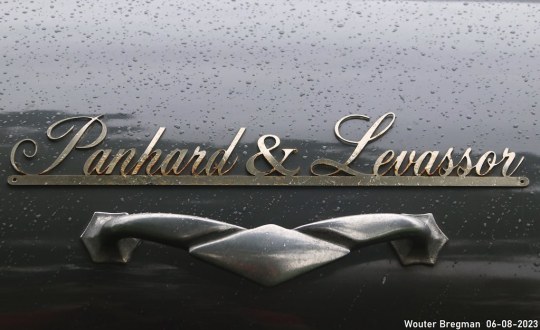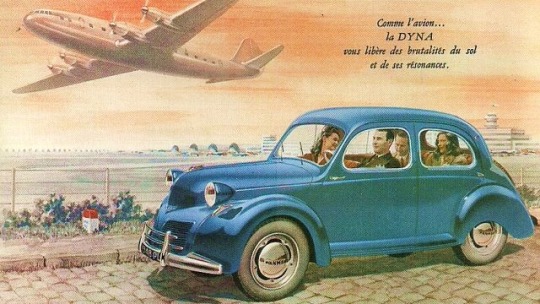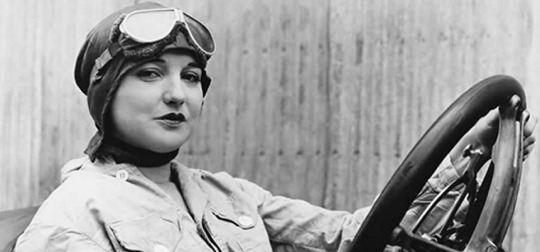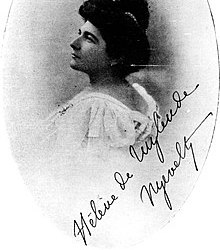#panhard & levassor
Explore tagged Tumblr posts
Text










1936 Panhard Levassor x72 Panoramique
28 notes
·
View notes
Text

Panhard & Levassor Dynamic Coupe 2516 cc 6 cylindres 1936. - source Cars & Motorbikes Stars of the Golden era.
57 notes
·
View notes
Text

#Mulhouse#2020#Panhard&Levassor#typeB#CitédelAutomobile#CollectionSchlumpf#revesdautomobiles#Voitures#automobiles#oldtimer#classiccars#collections#cars#vehicle#vehicule#rêves d'automobiles#automobile#voiture#photo#car
5 notes
·
View notes
Photo



Panhard & Levassor
Tonneau Type B, four cylinders, 2411 cc, 10 HP, 65 km/h
1902
71 notes
·
View notes
Text

1933 Panhard & Levassor X72 Panoramique (by Wouter Bregman)
11 notes
·
View notes
Photo

PATRIMOINE | Automobiles Panhard : nées dans les Côtes-d'Armor ➽ https://bit.ly/Automobiles-Panhard Fondé en 1891, Panhard & Levassor, premier constructeur automobile au monde, a trouvé ses racines dans les Côtes-d’Armor. Retour sur trois siècles d’histoire de la famille Panhard
3 notes
·
View notes
Text

1920 c. Two children play by a Panhard Levassor car. (French) From The Jazz Age Vehicle Archive, FB.
125 notes
·
View notes
Text

Always There, Women in Motorsport: The fast women of la belle époque
Women's history in motorsport is rich, and that has always been the case. Most of these stories however aren’t well known and aren’t spoken about enough. Women have always been in motorsport and always will be.
Three French women, Hélène van Zuylen, Camille du Gast, and Anne de Rochechouart de Mortemart are some of the fastest women from France’s La Belle Epoque (circa 1880-1914).
In 1898 Anne de Rochechouart de Mortemart (1847-1933) (also known as the Duchess of Uzes) became the first woman in France to obtain her driver’s license. While getting out of the car she announced with delight that woman had just overcome a new barrier. Not long after she also became the first to be caught speeding for which she had to pay a five franc fine.
in 1926 she founded the first female Automobile Club, L'Automobile Club féminin de France (ACFF)

The Duchess of Uzes in 1927
Hélène van Zuylen (pictured on the cover image) was a French author but also the first woman to compete in an international auto race. Baron Etienne van Zuylen, her husband, was the President of the Automobile Club de France
She entered the 1898 Paris–Amsterdam–Paris using the nickname Snail, while her husband used the nickname Escargot. She successfully competed the trail and entered the Paris-Berlin race in 1901 but was stopped by technical failure.
That year Hélène, a lesbian, would meet Renée Vivien with whom she would have an affair. Vivien's letters to a confidant revealed that she considered herself married to Hélène. Most of Vivien's work is dedicated to "H.L.C.B.," the initials of Zuylen's first names.
Just over a decade before she died, Hélène van Zuylen created the Renée Vivien Prize, Honoring the woman she loved and intending to give encouragement to female writers.

Hélène van Zuylen - Nouvelle Revue internationale illustrée, December 1908
Camille du Gast (1868-1942) finished 33rd (19th in class) out of 122 participants in the 1901 Paris-Berlin race. Du Gast, achieved the results despite driving her husband's 20CV Panhard-Levassor which was not designed for racing. She had to start the race in last because she was a woman. The race did mark 2 female competitors with du Gast and van Zuylen. She loved several extreme sports such as mountaineering, parachuting and frencing.
In 1902 she competed in the Paris-Vienna race and also wanted to compete in the New York-San Francisco but was refused entry because she was a woman.
In 1903 she would start the Paris-Madrid race. Which she would enter with a proper racing car, a works 5.7-litre de Dietrich car. It was a chaotic race with 207 competitors which unfortunately saw several deaths. Camille started in 29th and gained 9 positions in the first 120 km. She had climbed up to P8 before stopping to give medical aid to a fellow driver, Phil Stead (also driving a de Dietrich) involved in a near-fatal crash.

Camille du Gast in her 30 hp De Dietrich with starting number 29 during the 1903 Paris-Madrid Race
Later one of the leading drivers at that time, Charles Jarrot said that if Camille had not stopped Stead likely would have died. After an ambulance arrived she continued the race eventually finishing 44th or 45th in the shortened race.
The French government would stop the race at Bordeaux, as over half of the field (275 cars) had either crashed or retired and several drivers and spectators had died.
Open road racing was banned, so in 1904 Camille wanted to participate in the French elimination trial for the Gordon Bennett races, as the Benz factory team offered du Gast a race seat. But the Autosport Club France (ACF) banned women from racing. Du Gast published a letter in protest but the ban was defended as the ACF could not risk a woman getting injured or killed in a racing event.
Because of this she ventured to boat racing. One of those races was caught by a big storm which saw most competitors either abandon their ship or they sank. She was rescued and later declared the winner of that race.
Eventually she had to put a halt to her adventurous life when she survived an assassination attempt by her daughter. Nothing was ever the same for her after that. From that point she devoted herself to animals. She would serve as president of the 'French Society for the Prevention of Cruelty to Animals'
NEXT UP > More female racing drivers from the early 1900s
#Hélène van Zuylen#Camille du Gast#Anne de Rochechouart de Mortemart#Women's Motorsport History#*History Series#*History Series: Always There Women in Motorsport#Women in Motorsport#Also a little bit of queer motorsport history !#international women's day
177 notes
·
View notes
Text

Panhard et Levassor Dynamic automaking company in the Port-d'Ivry neighbourhood of Paris
French vintage postcard, mailed in 1906
#neighbourhood#tarjeta#port-d'ivry#postkaart#paris#sepia#port#company#historic#photo#postal#briefkaart#levassor#photography#1906#mailed#vintage#ephemera#dynamic#ansichtskarte#panhard#old#postcard#french#divry#postkarte#et#carte postale#automaking
4 notes
·
View notes
Text
Veterán felvonulással ünnepelete a május 1-ét a 125 éves Közlekedési Múzeum

A Közlekedési Múzeum idén ünnepli fennállásának 125. évfordulóját. A jeles alkalomból május 1-jén klasszikusjármű-felvonulást rendeztek a Városligetből a kőbányai Északi Járműjavítóba. A felvonuláson több veterános klub is részt vett, valamit privát veterángyűjtők egyedi darabjai is felbukkantak a 250 fős konvolyban. A Közlekedési Múzeum saját járművei, egy 1974-es Citroen DS - amit méltán hívtak “Istennőnek” - egy 1947-es Pobeda, illetve egy 1968-as BMW R60/2 típusú motorkerékpár is a saját lábán gurult, utóbbit dr. Schneller Domonkos, a Múzeum főigazgatója vezette. A majális az Északi Járműjavító és az Opera Eiffel Műhelyház közös udvarán folytatódott, ahol már hosszú sorban várták a látogatók, hogy beléphessenek a Dízelcsarnokba, és megtekinthessék az új tárlatot, a “Mivel megyünk? Energiamix a közlekedésben” című új időszaki kiállítást, amely a múzeum minden eddigi kiállításánál nagyobb területen, hiánypótló módon mutatja be korunk egyik legfontosabb témáját: az energiafelhasználást. A majális az új időszaki kiállításon túl az Animato klarinét kvartett zenei közreműködésével, veterán jármű szépségversennyel, kerékpáros akadálypályával és házi pörkölttel várta az érdeklődőket. Schneller Domonkos főigazgató köszöntötte a látogatókat és a veteránautó-tulajdonosokat, D. Kovács Róbert Antal, Kőbánya polgármestere - és a rendezvény fő támogatója - , továbbá Ókovács Szilveszter, a Magyar Állami Operaház főigazgatója szintén felszólalt a közönség előtt. Az esemény háziasszonya Zavaros Eszter, operaénekes, műsorvezető volt, aki magával ragadó jókedvvel és rutinos felkészültséggel vezényelte a programokat. A délután folyamán a múzeum elismerésében részesítette az összegyűlt járműveket, Schneller Domonkos díjat adott át többek között a legrégebbi járműnek: egy 1896-os Panhard & Levassor gépjármű szegedi tulajdonosának. A közönségkedvenc díjat a Kaáli Autó-Motor Múzeum 1973-as Lamborghini Espada-ja kapta. A felvonulók között olyan járműcsodák tették tiszteletüket, mint egy 1916-os Indian PowerPlus motorkerékpár, vagy az 1913-as Studebaker nyitott személygépkocsi, egy 1929-es Mercedes Benz Nürburg személygépkocsi, Lukács Ottó 1929-es magyar Méray Jap 600-as motorkerékpárja, amellyel tavaly 6000 km-es túrát teljesített Amerikában. A múzeum kollégái 125 szeletes tortával kedveskedtek a látogatóknak. Az új tárlat napjaink egyik legfontosabb témáját, az energiaforrások kérdéskörét vizsgálja a közlekedés vonatkozásában a Dízelcsarnok 6000 m²-es kiállítóterében, mely október végéig 10-17 óráig, szerdától vasárnapig látogatható. A múzeum különleges programokkal várja az egyéni és csoportos látogatókat, a iskolás osztályok figyelmébe ajánlja a múzeumpedagógia foglalkozásokat. Tovább információk a www.mivelmegyunk.hu weboldalon érhetőek el. A múzeummal kapcsolatos legfrissebb híreket és programajánlókat a Közlekedési Múzeum Facebook oldalán követhetjük. Forrás Read the full article
1 note
·
View note
Text










1931 Panhard et Levassor 3½-Litre SS Special Saloon
29 notes
·
View notes
Text

Affiche Panhard & Levassor Dynamic 1936. - source Cars & Motorbikes Stars of the Golden era.
47 notes
·
View notes
Text

#Panhard&Levassor#TypeA1#CitédelAutomobile#CollectionSchlumpf#Mulhouse#revesdautomobiles#Voitures#automobiles#oldtimer#classiccars#collections#cars#vehicle#vehicule#rêves d'automobiles#automobile#voiture#photo#car
2 notes
·
View notes
Photo

PANHARD 24CT (1964 г.)
Фирма Panhard-Levassor начинала со строительства бензиновых двигателей по лицензии Даймлера, а в 1891 г. выпустила свой первый автомобиль. Он стал первом в мире, имеющим классическую компоновку: двигатель был установлен впереди, а задние колеса приводились при помощи цепей. А на вторых в мире гонка
0 notes
Text

Race failure spelled doom for Porthos HOW much traffic could there have been in London back in 1907? The city’s population had just reached seven million and motor cars, nearly all of them from France, started appearing on the streets in the late 1890s. In 1895 there were 15 cars on the streets, with actress Minnie Palmer in her Rougemont probably the nation’s first woman driver. First man to own and drive a car in the UK was Evelyn Ellis, who had a Panhard et Levassor. […] https://cars4starters.com.au/race-failure-spelled-doom-for-porthos/?feed_id=29942&_unique_id=65b1983bb8994
0 notes
